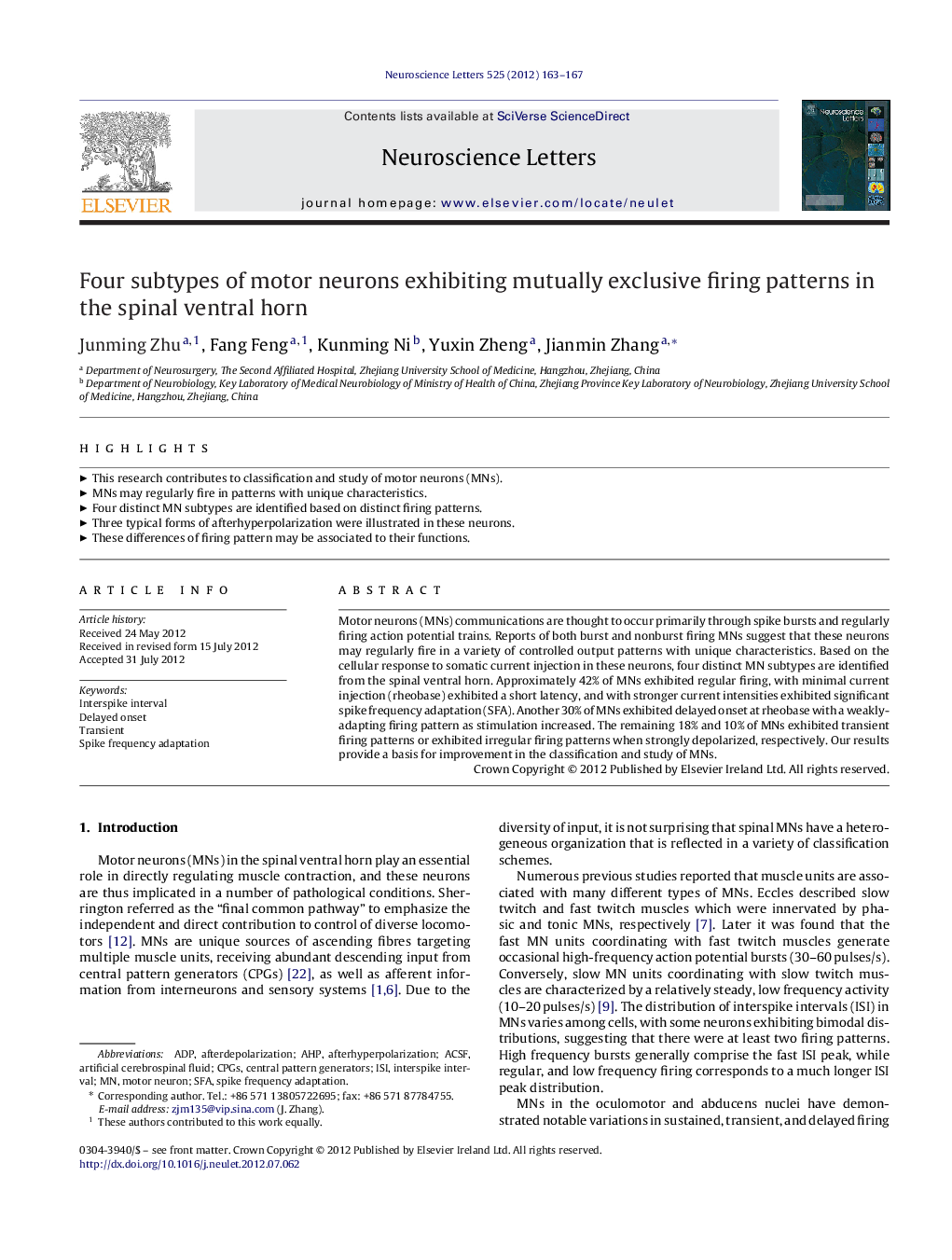| Article ID | Journal | Published Year | Pages | File Type |
|---|---|---|---|---|
| 4344398 | Neuroscience Letters | 2012 | 5 Pages |
Motor neurons (MNs) communications are thought to occur primarily through spike bursts and regularly firing action potential trains. Reports of both burst and nonburst firing MNs suggest that these neurons may regularly fire in a variety of controlled output patterns with unique characteristics. Based on the cellular response to somatic current injection in these neurons, four distinct MN subtypes are identified from the spinal ventral horn. Approximately 42% of MNs exhibited regular firing, with minimal current injection (rheobase) exhibited a short latency, and with stronger current intensities exhibited significant spike frequency adaptation (SFA). Another 30% of MNs exhibited delayed onset at rheobase with a weakly-adapting firing pattern as stimulation increased. The remaining 18% and 10% of MNs exhibited transient firing patterns or exhibited irregular firing patterns when strongly depolarized, respectively. Our results provide a basis for improvement in the classification and study of MNs.
► This research contributes to classification and study of motor neurons (MNs). ► MNs may regularly fire in patterns with unique characteristics. ► Four distinct MN subtypes are identified based on distinct firing patterns. ► Three typical forms of afterhyperpolarization were illustrated in these neurons. ► These differences of firing pattern may be associated to their functions.
